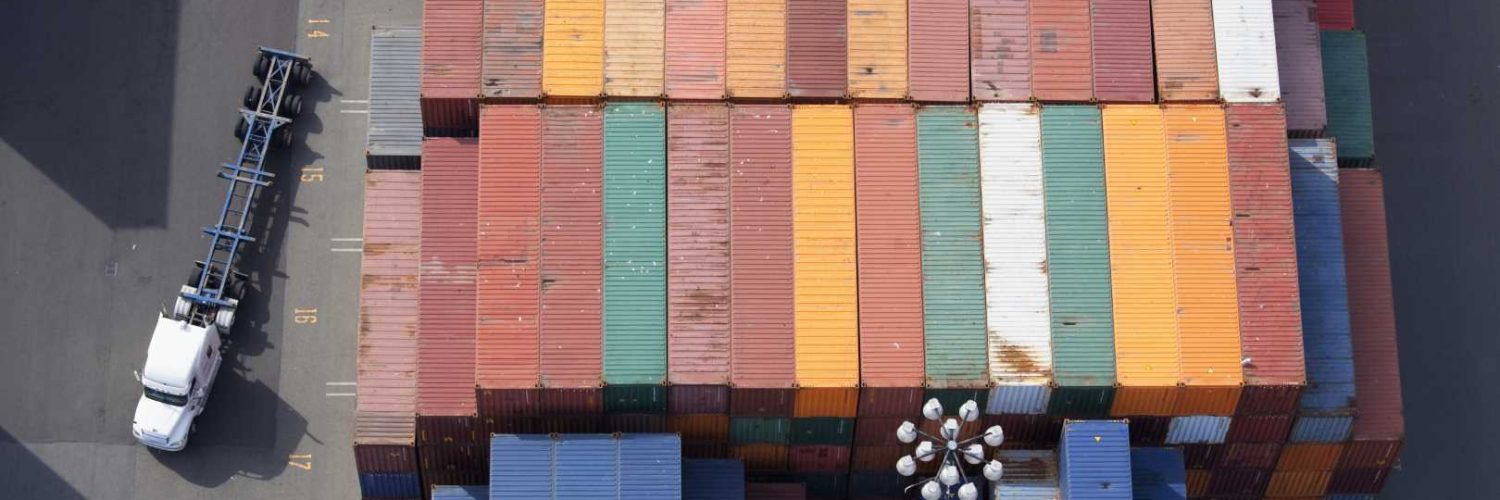The global freight forwarding market was already in the contractionary territory before COVID hit us in 2020. This was primarily due to the US-China trade war that was going on and governments around the world increasingly shifting towards protectionism.
Research from Ti suggests that the sea forwarding market contracted by 1.7% in 2019 due to weak macroeconomic factors.
COVID-19 has pushed the freight forwarding industry into further disarray, and new trends have emerged as businesses operating in the industry are increasingly adopting innovative ways to combat the ongoing crisis.
Shippers, Forwarders and LSPs are completely reassessing their supply chain operations and their strategies. Adoption of technology and digitalization have further accelerated as a result of the pandemic.
Here are 6 major developments that have arisen in the Freight Forwarding industry due to COVID.
- Localized supply chains
The COVID pandemic has forced many western governments and companies to look for national or regional supply chains to reduce exposure to global crises. Increased risks of trade wars and protectionism policies adopted by certain governments are additional factors that have pushed companies to diversify their sourcing strategies. This development is likely to have the most impact in critical sectors like healthcare and food.
However, companies do realize the advantages of globalized supply chains for the manufacturing and retail sectors, and therefore will not entirely forego them. While the trend might shift back to globalized supply chains once the pandemic is over, companies have learnt a hard lesson not to put all their eggs in one basket.
- Rise of spot market
Polls conducted on retail and manufacturing shippers suggest that about half of retail and manufacturing shippers made more use of the spot market during the pandemic to keep volumes moving. Another reason they switched to the Spot market is to secure better rates.
We have seen many spot markets come up with new strategies to capture and retain as much volume as possible. However, if the demand for extra-ordinary capacity falls after the crisis, we could see a regression to the norm to some level.
- New generation of tech startups in the industry
A new generation of tech startups has emerged over the last few years with the value proposition of solving inefficiencies in the industry. This has forced the already established players to focus on adopting and using the latest technological developments to provide the best possible solutions to their clients.
One example of this process automation is the use of smart OCR solutions for data entry into CargoWise.
This has resulted in a better customer experience and made forwarding services more accessible. One of the notable improvements for the customers is that they’re now able to receive instant quotes and online freight booking capabilities from hundreds of forwarders globally in the spot market.
In a recent poll, 25% of retail and manufacturing shippers have indicated that they would buy more freight services through digital platforms and digital forwarders in the future. This digitalization trend is most likely to increase even more steeply in the future.
- Real-time visibility
Many retail and manufacturing shippers now believe that the COVID pandemic has made real-time visibility very important. In the near future, it could even become a ‘mandatory’ requirement in the industry.
The demand for ‘flexible’ logistics solutions is rising, and real-time visibility will play an essential role in implementing flexible solutions. Real-time visibility of supply chains also helps players in the industry with their Business continuity plans.
- Technology-based solutions
The global freight forwarding market has seen quite a sharp rise in digitalization over the last half a decade.
It is only natural to expect this trend to accelerate due to the pandemic. However, financial constraints faced due to the pandemic could affect the amount of investment forwarders can make towards technology adoption.
However, one thing is certain. Forwarders who can provide technology-based solutions to their customers will undoubtedly gain a significant edge over their competitors.
The growth of SAAS and cloud-based off-the-shelf deployments have made it cost-effective even for the smaller players in the industry to implement technology. Also, the use of such a broad mix of solutions vastly increases the need and expectation for interoperability between proprietary, off-the-shelf and customized systems to ensure smooth operation and that maximum value is gained.
- Modal switches
A very notable development in the forwarding industry due to the pandemic has been retail and manufacturing shippers shifting from air freight to sea freight.
Grounded flights due to the pandemic have severely reduced air capacity.
When the pandemic broke out, the cancellation of air travel wiped out nearly 50% of airfreight capacity. Even though demand came back, it was short-lived, as more COVID waves broke out. At this point, there is a great amount of uncertainty about when and how it will return to normal levels of operation.
Airfreight rates have been volatile and toward the higher end of the range and are expected to be so in the near future.
Sea freight has been comparatively more predictable. Most shipping lines have managed capacity quite effectively during the pandemic. Carriers can re-introduce more capacity when required, making sea freight a more reliable option than air freight.
Pharmaceuticals and certain perishables can now be moved by sea in refrigerated packaging. The trend going into the future too favours sea freight over air freight.
Conclusion
In conclusion, it can be noted that the most successful supply chains will be those that can effectively respond to and mitigate potential disruptions in the future. Also, the first adopters of technology and digitization will gain a clear advantage over their competitors.
Cargodoc is a smart, customized OCR solution developed to help Freight forwarders and 3PLs enter data into CargoWise accurately and swiftly. It is jointly developed by Soft Freight Logic and Deep Cognition, 2 leaders in the logistics technology industry. The decades of domain knowledge and expertise in the industry by its creators makes CargoDoc the best smart OCR solution for data entry into CargoWise for freight forwarders and 3PLs. Mail us at sales@cargodoc.ai or visit our website for more information or to book a demo https://cargodoc.ai/






